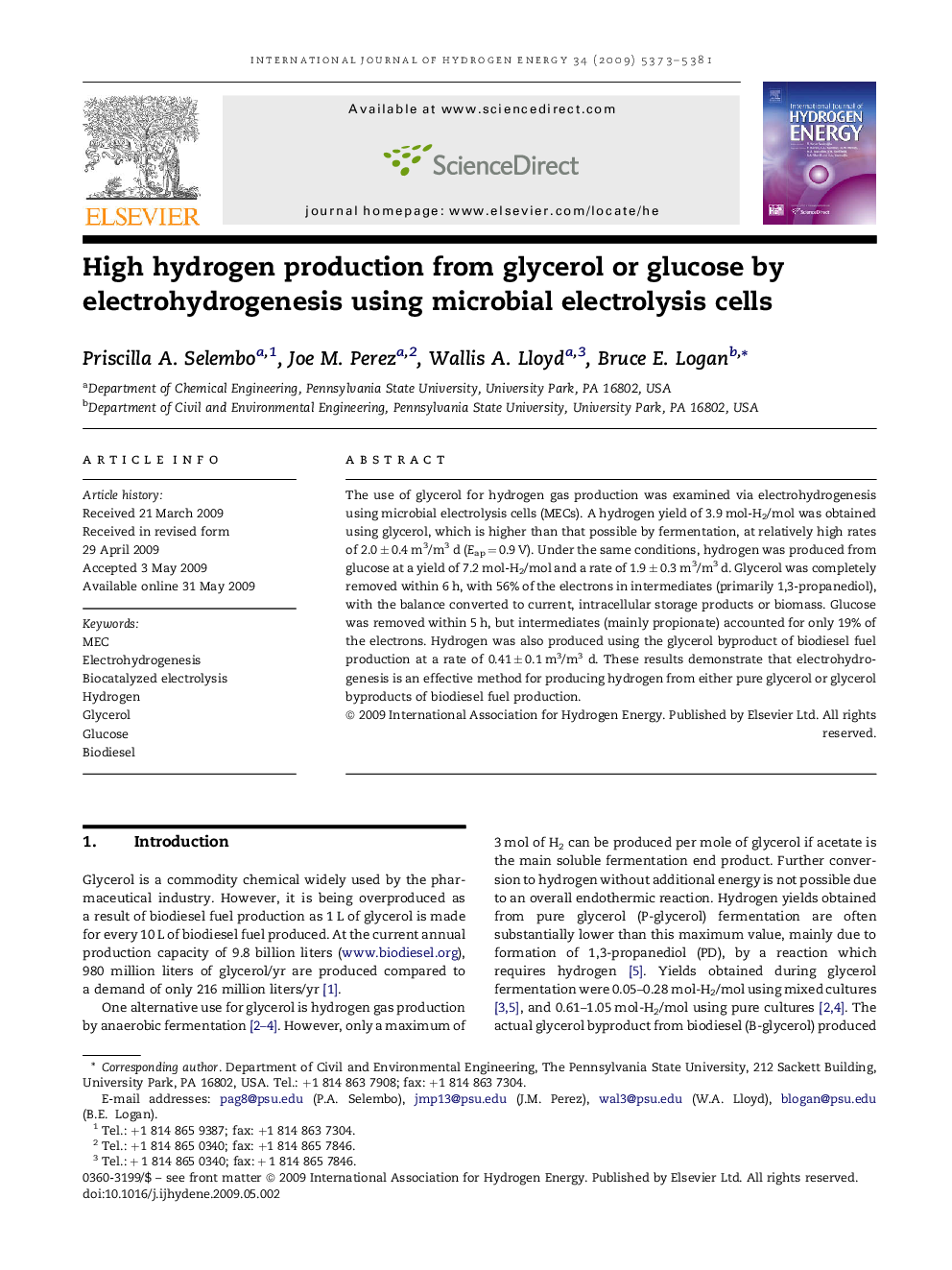| Article ID | Journal | Published Year | Pages | File Type |
|---|---|---|---|---|
| 1283185 | International Journal of Hydrogen Energy | 2009 | 9 Pages |
The use of glycerol for hydrogen gas production was examined via electrohydrogenesis using microbial electrolysis cells (MECs). A hydrogen yield of 3.9 mol-H2/mol was obtained using glycerol, which is higher than that possible by fermentation, at relatively high rates of 2.0 ± 0.4 m3/m3 d (Eap = 0.9 V). Under the same conditions, hydrogen was produced from glucose at a yield of 7.2 mol-H2/mol and a rate of 1.9 ± 0.3 m3/m3 d. Glycerol was completely removed within 6 h, with 56% of the electrons in intermediates (primarily 1,3-propanediol), with the balance converted to current, intracellular storage products or biomass. Glucose was removed within 5 h, but intermediates (mainly propionate) accounted for only 19% of the electrons. Hydrogen was also produced using the glycerol byproduct of biodiesel fuel production at a rate of 0.41 ± 0.1 m3/m3 d. These results demonstrate that electrohydrogenesis is an effective method for producing hydrogen from either pure glycerol or glycerol byproducts of biodiesel fuel production.
